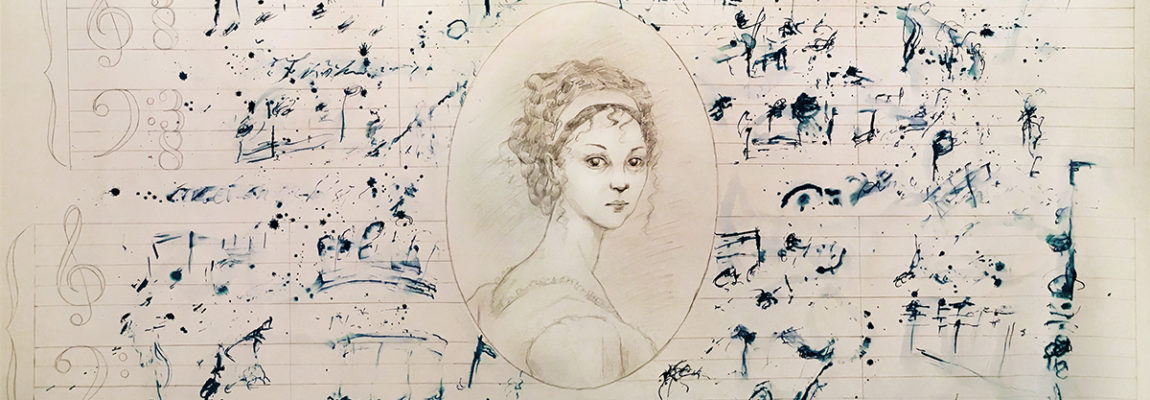For fans of great music, the possibility of a new discovery is always tantalizing. However, there are times when a work is misattributed – the famous ‘Albinoni Adagio’, for example, was written centuries after the composer died. The Italian critic, broadcaster, and musicologist Luca Chierici has ascertained that one work recently attributed to Chopin, the ‘Valse mélancolique’, was in fact composed by Charles Mayer. Mr. Chierici, in response to my request to comment on his research, summarized the discovery (currently only published in Italian) as follows:
The Valse in F-Sharp Minor (called also Valse mélancolique) was apparently published in 1986 by Stanislaw Dybowski on the bi-weekly “Ruch Muzyczny”. I heard it by chance in 1987 since the italian pianist Bruno Canino played it as an encore in Milano, and I was immediately fascinated by the beauty of some melodic and harmonic lines. Stephen Hough and Garrick Ohlsson made recordings of the piece and YouTube is full of amateurish takes of the same Valse.
Now, it happened that in my recent orders of scores of the composer Charles Mayer (for some research I’m making about him) from the Berlin Staatsbibliothek I unexpectedly found that Mayer was the actual author of the piece. I wanted to write a short communication about my discovery and I immediately thought about the Chopin Institute in Warsaw. A very kind scholar wrote me back immediately saying that the Valse had been not included in the standard catalogue of Chopin works but that the news of a correct identification of the piece was very interesting. With one of the music magazines I collaborate for (the bi-weekly “Amadeus”), I arranged to have an article published. At the same time I visited Canino, gave him a copy of the score and asked if he wanted to record the Valse in the original form. This is a on-going project and the magazine announced that soon a link for downloading the audio will be available for the readers.
The particular values of Mayer’s composition are described in this article [currently at the top of this linked page, but that might change]. The most relevant detail is that the copy of 1986 which is currently circulating (and available at IMSLP) is a shortened version of the original Mayer’s one, and this fact (i.e. its poor architecture) was used to say that Chopin could never write a piece like that, apart the nice chopinesque themes and harmony. The original Mayer Valse is perfect in the sense of architectural balance and re-establish the value of the piece. By the way, another copy identical of the corrupted one had been published in 1936 : I examined it and found that is identical to the current shortened version. The “thrilling aspect” of the whole matter is: who published the shortened version ? Why he could only transcribe that version without consulting a copy of Mayer’s score?
In an email exchange we had relating to this discovery, Stephen Hough wrote (and gave me permission to publish) the following comments:
It was not so much the structure which made me think from the first time I saw the piece (1936 edition) that it couldn’t be by Chopin but the compositional mistakes. Chopin was fastidious about such things and there is false note-leading, inaccurate spelling of accidentals and rough harmony (too many thirds, bad spacing). I also never thought it sounded Chopin-esque but much more Russian. I only put it on as a curiosity and insisted that the notes explain its doubtful attribution.
But as it stands it’s an attractive piece and I’m glad I got to record a piece by yet another obscure composer!
To hear the work in a performance that is not quite as ‘amateurish’ as most on YouTube, as Chierici expressed, click here for Garrick Ohlsson’s lovely recording of the piece, indexed at the end of his cycle of Chopin’s actual waltzes – something that will no longer be the case in new recordings of the cycle thanks to this new discovery.

Comments: 3
The score of Mayer’s version is here: http://conquest.imslp.info/files/imglnks/usimg/8/87/IMSLP286679-PMLP465508-Mayer_-_332_-_Le_regret_-_Valse-Etude_m__lancolique_f-.pdf
Thank you!!
Can’t see any evidence this piece was composed by Meyer (op. 332). I believe he took the theme from some waltz and made it into a Waltz-etude, how the title spells. I like this “Valse” quite a lot, thought it’s very messy to be Chopin’s and with some peculiar musical patterns which are nowhere to be find in Chopin’s work. But the first version of this piece (whenever it was made) could be from some Chopin’s handwritten notes.